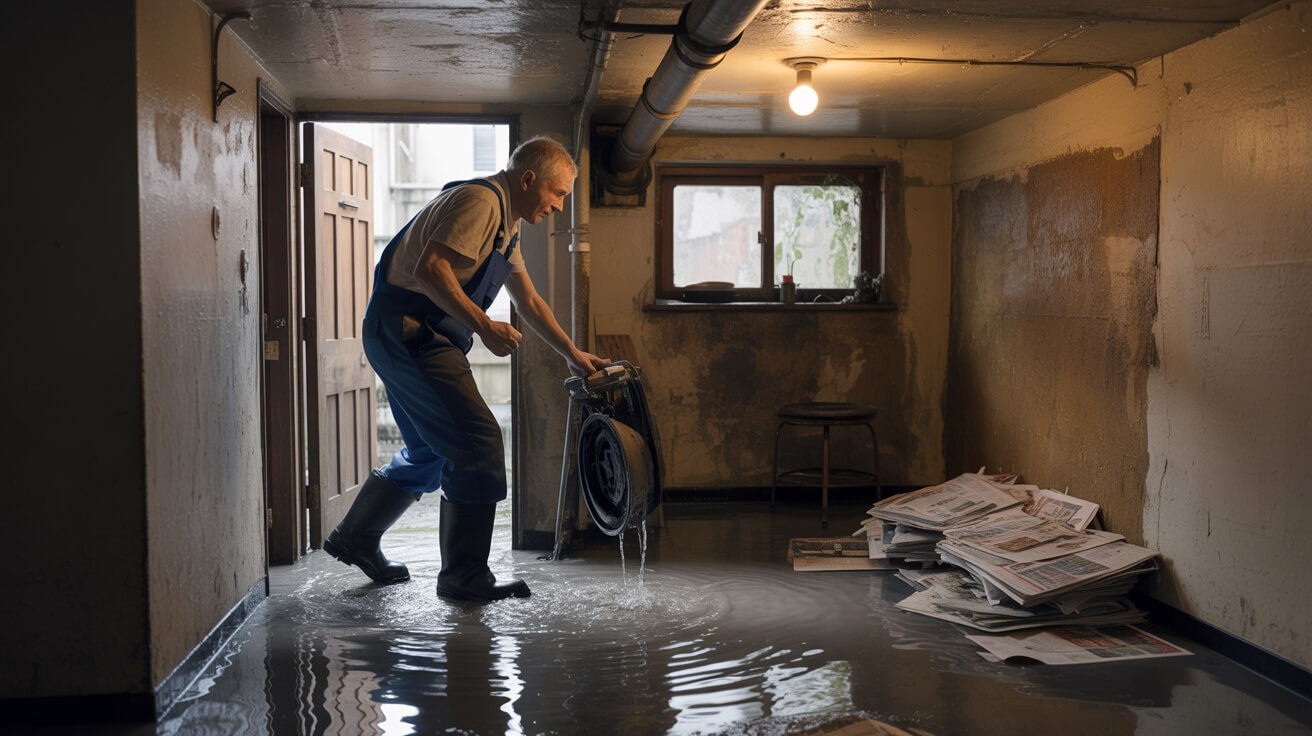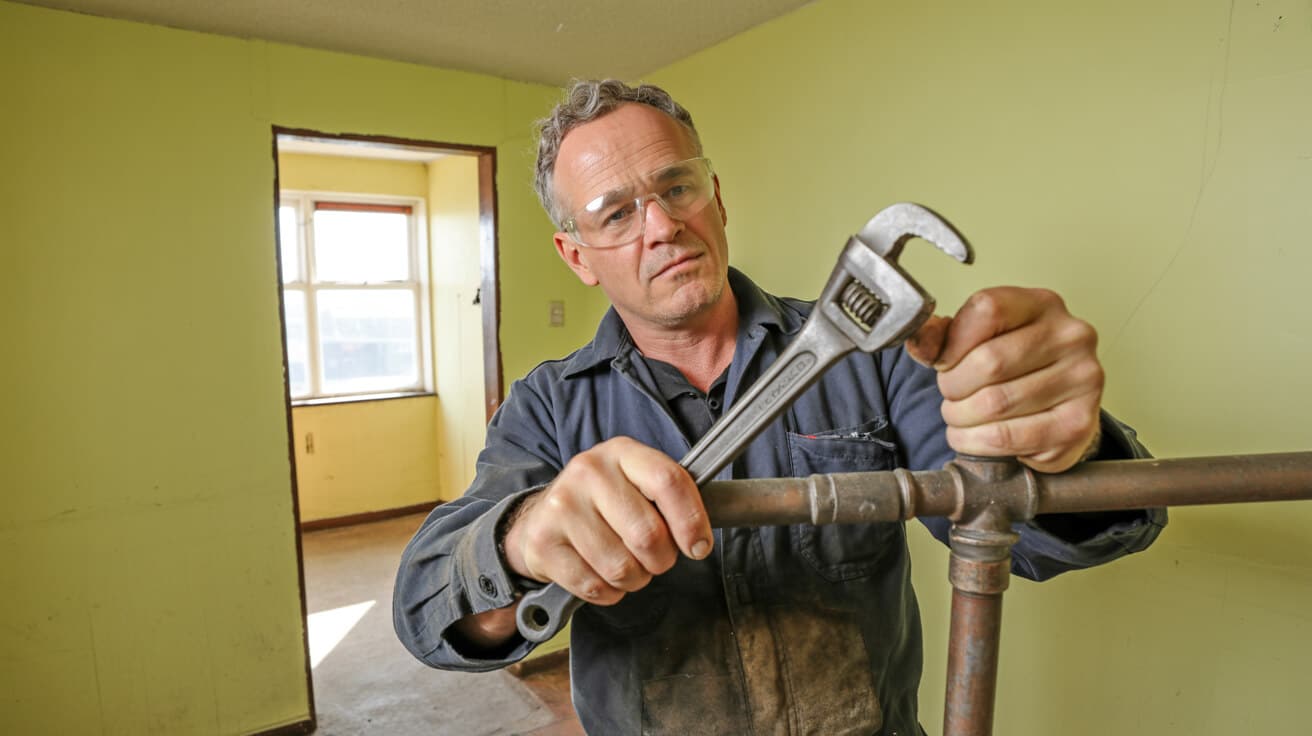 New Build Heating Systems What Developers Actually Install
New Build Heating Systems What Developers Actually Install

What Heating Systems Are Actually Fitted in New UK Homes from 2025—and What Does It Mean for You?
Picture this: you’re inspecting a shiny new build, architectural lines crisp, EPC papers stacked, developer smiling. Beneath the gloss sits the real asset—or the hidden trap—that defines your day-to-day comfort, future resale, legal safety, and what you’ll be paying for warmth and hot water over the next decades. If you miss the details now, there’s no turning back later without cost and stress. The new world of UK heating changed for good in 2025: gas is gone, heat pumps rule, paperwork is as mission-critical as the pipework, and your ability to ask the right questions is what shields you from traps left behind in a rush to “low-carbon.”
You can’t ‘set and forget’ a modern heating system—ownership now means understanding what’s behind the controls.
What’s really getting fitted behind those well-plastered walls? Let’s break it down with the clarity and honesty that working plumbers and handover engineers see daily—giving you control before your signature ever lands on the dotted line.
Are Gas Boilers Still Fitted in New UK Homes, or Are They Over?

The short answer: after 2025, gas boilers are effectively over for new builds in the UK. Developers once defaulted to gas combi systems, easy and familiar, but changing laws now close that chapter for good. The government’s Future Homes Standard and new Building Regs require low-carbon heating on all new dwellings—no ifs, no “option to retrofit later”, and no wink-nudge loopholes except in true one-off edge cases (think ultra-remote plots or complex mixed-use blocks with existing gas grid feeds). Trying to sneak traditional gas in can tank sales, cause insurance and mortgage snags, and leave owners facing costly forced upgrades before resale or remortgage.
Since 2025, gas combi and regular boilers are all but extinct in newly-built UK homes; expect builders to instal heat pumps or certified equivalents instead.
“From 2025, new homes will be required to use low-carbon heating—gas boilers are essentially phased out except for narrow exemptions.” (The Guardian, 2024)
What do you need to check on every new build?
- Scrutinise system specification sheets: —don’t trust website renders or estate agent scripts.
- Confirm EPC and compliance forms reference the actual installed kit, not placeholder wording.
- Ask, in writing, if the developer commits to meeting *all* of Part L and Future Homes requirements.
- Query any “provisional” or “permit-ready” gas proposals. If it’s not heat pump or future-certified, escalate—it will affect lending and resale.
- Make sure your mortgage broker and insurer see the heating compliance, not just what the developer claims.
The system you get at legal completion is your liability, not just the developer’s promise. Challenge vagueness now—remediation later is expensive and slow.
Are Air Source Heat Pumps Really the Main Heating Now?

Yes, air source heat pumps (ASHPs) are now standard in nearly all new UK homes built from 2025 forward. Why? They align with EPC requirements, planning law, and the long-term push for carbon-neutral housing. For buyers or managers, ASHPs mean a visible shift: instead of a familiar combi or system boiler in a kitchen or airing cupboard, you’ll find an outdoor heat pump unit (usually slab-mounted near a back or side wall) and a hefty hot water cylinder, often tucked in a utility or landing cupboard. The system captures heat from the air and works even in freezing winter—if sized and commissioned right.
Nearly every new detached or semi built in the UK after 2025 features an ASHP for heating and hot water—no built-in gas option, no exceptions for “future upgrades.”
“Redrow made heat pumps standard in new builds, with most major developers expected to follow suit to meet EPC and planning requirements.” (Redrow 2023)
Smart buyer and manager moves:
- Confirm the *make, model, and full published spec* for the ASHP—not just “heat pump fitted.”
- Insist on the G3 and WRAS certificates from both installer and product—these affect warranty and future claims.
- Demand exact location details for outdoor units: avoid window adjacency and public walkways where possible, for comfort, planning, and servicing speed.
- Ask for a start-up demonstration: an engineer should *show* you how to use any stats, controller apps, and reset or schedule features.
- Schedule and record annual maintenance from the outset—skipped servicing can void warranties as early as year one.
Future proof on the brochure means nothing unless you know your system spec, installer contact, and what you’re actually shown at handover.
Underfloor Heating: Is It Really the New Default, or Still a Perk?

Breakthrough: underfloor heating (UFH) is no longer a rare upgrade—it’s standard on ground floors in most UK new builds using heat pumps. Why? Heat pumps are most efficient with lower water temperatures, and spread-out UFH piping provides gentle, even heat at these reduced temps, which is perfect for open-plan living and maximising your EPC. So, in 2025 and beyond, expect every new detached, semi, or high-spec flat to feature looped UFH throughout the downstairs rooms (occasionally bathrooms upstairs).
Ground floor underfloor heating is now baseline in new builds with heat pumps; full-house UFH or “radiators everywhere” are deviations, not defaults.
“Top developers pair heat pumps with underfloor heating; generally, it’s standard on all main living floors, with radiators upstairs.” (National Grid)
Before you sign:
- Request a room-by-room plan for UFH layouts, never just “most living areas.”
- UFH should come with commissioning and balancing documentation for each circuit—this stops “cold spot” complaints after handover.
- If any zones are up for debate or potential upgrade, lock them in now (post-handover retrofits are far costlier and messier).
- Where radiators *are* present, get BTU output and pipe sizing for each room—especially open-plan lofts and conversions.
The time to win long-term comfort and value is before you take the keys; chasing add-ons later costs much more than haggling before exchange.
Are Ground Source Heat Pumps or District Heating Used Often?

No—ground source heat pumps (GSHPs) remain a rarity, and district heating appears only in high-density or institutional schemes. GSHPs offer unmatched efficiency and quiet running, but trenching or borehole installation means extra site cost and disruption; expect to see them only in premium eco-developments or scattered rural one-offs. District heating, where a shared plant (boiler, heat pump, or CHP) pipes heat to multiple homes or flats, is rising in city blocks, social housing, and some multi-unit conversions, often where planning or grant funding required it.
If you’re buying or renting a standard house or low-rise flat, you’ll almost always see ASHP, not GSHP or communal systems, unless you’re shopping at the luxury or institutional end.
“Ground source heating is found in less than 1% of new UK homes; district networks are mostly for city blocks or social housing.” (ProBuilderMag 2024)
What to pin down if you’re offered GSHP or communal heating:
- Clarify who maintains, insures, and pays for ground loops or central plant—confused ownership means repair delays (or uninsurable risk).
- In flats or tenancies, insist on metre-separated billing. Mortgage lenders now often require proof that each property has control over its own heat and usage, even if plant is shared.
- If a grant or “incentive” helped fund the communal system, clarify whether future tariffs are capped and if you benefit as the occupier.
Shared infrastructure saves costs upfront—but brings extra moving parts at resale and during major upgrades.
Does Direct Electric or Solar Count as “Main Heating” in Practice?

Almost never—direct electric (e.g., panel, storage, or electric boilers) and solar-only heating are outliers, installed mainly in compact flats or specialist “zero carbon” experiments. Why the reluctance? Direct electric instals fast but converts to higher, less predictable running bills. Most new builds need a robust EPC score or planning department sign-off, and heat pumps deliver those handsomely while remaining compatible with future grid decarbonisation. Solar PV is now common—but mainly supports water heating, appliances, or batteries, rather than being the sole heating source.
Direct electric and sole-PV systems are almost never installed as the main heat source in new houses from 2025—look out for them only in specialist or urban micro-developments.
“Direct electric covers main heating only for a minority of compact new builds, and panels alone cannot meet heat demand in family homes.” (Daikin UK)
Key moves if buying or managing these units:
- Scrutinise the EPC and request in-writing energy use forecasts plus the make/rating of every PV and inverter component.
- For all-electric, ask what support/contingency exists during outages; well-run developments offer backup provision or on-call aid.
- Future upgrades may need costly fuse-board or supply enhancements—get a written commitment or heads-up from the site manager before signing.
The upfront bargain of basic electrics or PV-only often disappears on your first winter electricity bill.
What Paperwork and Documentation Is Non-Negotiable?

If you value comfort, security, or future-proof legal standing, documentation is as important as the actuators and pipework. Modern heating systems demand full traceability and compliance for mortgage, warranty, and building control sign-off. Anything missing? It’s your headache as a buyer, manager, or landlord—delayed sales, sky-high insurance, or enforced upgrades await.
Every new heating system handover requires a complete compliance, commissioning, and aftercare pack. Anything else means avoidable risk.
“Installers must provide WRAS, G3 (if applicable), and system commissioning; incomplete handover invites building control issues.” (NewHomesForSale.co.uk)
Handover checklist:
- WRAS approval certificate—confirms all parts resist contamination and backflow.
- G3 certificate—essential if you’re being handed an unvented hot water cylinder.
- Full Building Regs signoff, referencing Future Homes Standard, Part G (water safety), and Part L (energy).
- Commissioning/test sheets (not just “certified installed”): includes circuit balancing, pressure readings, flow rates.
- Complete and current EPC (no “forecast”)—scan for reference to installed system and its efficiency band.
- Named aftercare engineer(s) and warranty hotline—steer clear of generic “customer support” only.
No paperwork, no warranty. No test log, no building control. Legal comfort is worth as much as physical warmth.
How Can You Ensure Everyday Comfort Instead of Just Box-Ticks?

Comfort doesn’t come from system brochures or “low-carbon” tags; it is built during the handover and the weeks after you move in. Even best-in-class heat pumps or next-gen UFH won’t keep you warm and worry-free unless they are balanced, labelled, and demoed properly for your use. Miss this window, and you inherit a call centre run-around or discover cold rooms just when you need performance most.
Real comfort is delivered by live zoning and balance proofs, clear manual and app-based controls, plus hotline access to a named engineer—not just a helpline.
“Handover packs should always include WRAS/G3 paperwork, user instructions, and direct engineer contact—not just a helpline.” (Redrow 2023)
Post-handover comfort protocol:
- Walk each zone and controller in person with the commissioning engineer or site plumber.
- Get a printout or digital copy of balance and temperature readings zone-by-zone; insist on a demonstration at handover.
- Clarify emergency/aftercare response: who, when, escalation ladder.
- Schedule your first annual service at key exchange (can affect warranty and must often be logged year one).
Comfort is engineered twice—first at installation, second at handover. Anything less is a permanent disadvantage.
What Should You Demand From the Developer Before Handover?
Once scaffold and trades are offsite, your leverage drops. The handover week is the single most powerful moment to clarify, correct, and future-proof your heating system. Hector Gauge from Plumbers 4U sees what happens when corners are cut—and how avoidable so many long-term frustrations really are when you act before the keys drop.
It costs less to argue your requirements now than to fund remedials after you’re in.
The 2025 Handover Essentials—Concrete Questions to Nail Down
- Request *manufacturer and installer details* for every core system: heat pump, cylinder, UFH manifold, stats/controls.
- Confirm signed, dated system schematics mapping every circuit, controller, and valve (including what’s on smart apps or wireless).
- Make sure you have coverage maps and room-by-room plans for UFH; don’t let “main living area” suffice on its own.
- For radiators, note make/model and exact room fit. In large or open-plan homes, check heat loss calcs and insulation level.
- Solar/battery handover: model, spec, and installer details (plus DNO notification evidence if grid-connected).
- Confirm presence and spec of ventilation—MVHR vs. simple extraction; get maintenance schedule and philtre change details.
- Demand all certificates up-front; do not let “pending after completion” stand.
- smart controls: will brands like Nest, Hive, Tado, or app upgrades work with the current wiring and controls? No surprises later.
- Aftercare: ask for a hotline, a named engineer, and escalation path in writing—not just generic main office support.
- Accessibility: if you or your tenants have greater needs, flag them now for proper grab-rails, lowered stats, or ultra-low temp zones.
- If anything is unclear, escalate with the site lead—no reputable team will dodge such queries.
Ambiguous or half-finished paperwork is your signal to delay completion—buyers and managers set the standard that keeps the industry sharp.
Secure Your New Build Heating—Audit, Upgrade, or Handover With Plumbers 4U
Don’t let developer shortcuts, missing paperwork, or hidden setup errors saddle you with cold rooms, compliance drama, or warranty gaps. Plumbers 4U’s experienced engineers specialise in Future Homes-compliant setups, user-friendly controls, and spot-on paperwork. Whether you’re buying, letting, managing, or holding new build property to portfolio standards, you can book us for a pre-handover system walk, paperwork audit, or future expansion upgrade. No mystery, no half-measures—just the rigour you wish every developer would show. Our stepwise, WRAS- and G3-certified handover flow gives you usable assurance that lasts beyond the keys.
How do you guarantee the heating and comfort your property deserves—rather than discover mistakes when trades are long gone?
Book a handover, survey, or system upgrade with Plumbers 4U and secure paperwork, live support, and best-in-class comfort—every system, every room, every single time.
Instal standards, paperwork, and aftercare are now the difference between a smart investment and a headache—Plumbers 4U treats every instal as if it were our own.
Frequently Asked Questions
What heating technologies are defining 2025 UK new build homes—and why?
You’re looking at a landscape transformed by regulation and buyer demand: air source heat pumps (ASHP) paired with wet underfloor heating (UFH) on the ground floor now set the standard in nearly every UK new build, pushed ahead by new laws and real efficiency.
The Future Homes Standard is clear: no new gas, low-carbon heating as baseline, and systems designed for efficiency you can prove with the paperwork. The norm is an external ASHP, slab UFH downstairs for steady warmth, and radiators upstairs to control costs and enable fast room-by-room heat. High-spec homes go full-house UFH or offer advanced zoning, but for most buyers, that “tried-and-tested” combo covers comfort and compliance in one swoop.
“A heating system is a financial decision as much as a comfort one—choose what proves its value beyond the builder’s handover.”
Which features distinguish a compliant, future-ready instal?
- ASHP with ground-floor wet UFH, radiators above; system flow temperature capped at 55°C for efficiency.
- Hot water delivered via a G3-certified unvented cylinder, not a combi boiler.
- EPC B or better on handover, with product and compliance certificates filed.
- Basic programmable thermostats as standard, smart controls as an optional upgrade.
- Full installation dossier: EPC, WRAS, commissioning logs, warranty cover, and the spec sheet signed by a registered installer.
What signals the instal isn’t up to scratch?
- Gas or direct electric included in the base design.
- Vague about system zoning, control, or installation documents.
- Dated or missing paperwork, or promises of upgrades “after you move in.”
A high-performing system is tailored, commissioned, and professionally inspected before you ever get the keys. Insist on independent validation—firms like Plumbers 4U spot shortcuts and confirm long-term value.
Why have air source and ground source heat pumps become the default—and can you still get a gas boiler if you want?
New legal requirements shut the door on standard gas boiler instals for new builds, making heat pumps (air and ground source) the new normal—and it’s about more than just carbon targets. Most major developers now instal ASHPs by default; ground source only appears where plots are large enough to justify the higher cost and disruption of ground loops.
You can’t simply “request a gas system” anymore—planning permission and handover sign-off hinge on current regulation. Mortgage lenders and insurers increasingly ask for proof that your heating system is certified, sustainable, and guaranteed to last as rules tighten again in the next few years.
“Don’t inherit a compliance mess—check your heating spec before you ever set foot inside.”
Are there any exceptions or loopholes left?
- Almost none for domestic buyers: Only old planning permissions (“grandfathered” projects) or unique commercial plots might get a gas pass.
- Retrofitting after purchase isn’t a hack—in practice, it brings high cost, disruption, and risks losing finance options or failing future EPC checks.
- Rural locations may allow for non-standard instals temporarily, but this is increasingly rare.
What documentation should be non-negotiable for your peace of mind?
- System-specific EPC projection with ASHP or GSHP noted.
- WRAS and G3 paperwork, not a generic “template.”
- Room-by-room control and zoning map.
- Full commissioning paperwork and installer accreditation.
For total peace of mind, request an independent Plumbers 4U review before exchange—you’ll avoid hidden problems and secure your long-term investment.
How do current regulations and energy targets dictate the heating you actually get?
No developer flips a coin anymore—every UK new build is steered by an iron triangle: the Future Homes Standard, EPC and MEES rules, and the cost-to-run for future owners. The legal flow temperature cap (usually ≤55°C), carbon emission reduction targets, and insurance preference for certified systems force even mass-market developers to choose solid, documented heat pump and UFH setups.
The minimum for compliance: ASHP, slab UFH on ground, radiators or towel rails upstairs. The rest? Optional or upgradable, not built into most base quotes. Energy efficiency ratings impact everything from mortgage rates to sale value, so most developers cut through the noise and stick to what gets EPC results.
“Builders hit the legal line; buyers win when they demand more—future comfort starts now with better heating choices, not after complaints.”
What proof should buyers, agents, and property managers always demand?
- EPC with stated system and energy projections locked in at handover.
- Load calculations and system sizing by room—not “whole house” estimates.
- Control schematic: exactly where stats and manifolds will be, plus the ability to upgrade to zoned smart controls.
- Handover kit with warranty, installer’s accreditation, and an aftercare promise.
If you want more value and future flexibility, insist on a line-by-line handover and review by a true expert like Plumbers 4U, rather than just taking what’s “in the package.”
What measurable value does wet underfloor heating add for homeowners and landlords?
Wet underfloor heating on ground floors is now almost standard—not just for luxury, but because it makes full use of the low temperature output from heat pumps, maximising both comfort and efficiency. Radiators remain commonplace upstairs to reduce costs and speed up bedroom heating, but slab UFH means no cold spots, silent operation, and a serious EPC boost.
UFH needs real engineering: proper zoning, heat loss calculations, and compatibility with your chosen floor finishes. A poor instal (or one with unapproved flooring) can void warranties and cut long-term efficiency, turning a comfort upgrade into a hidden liability.
“Invisible comfort is worth more than flashy features—quality UFH boosts EPCs, keeps rooms consistently warm, and never gets in your way.”
Which checks raise UFH from “marketing extra” to long-term asset?
- Confirm zoning and thermostat layout—ask for wiring and piping diagrams mapped to each room.
- Verify installer and product warranties; demand WRAS/G3/Part L sign-off.
- Check with the installer that every flooring material matches the spec, especially for leasehold and managed blocks.
- Ask for a commissioning and controls demonstration prior to acceptance.
All these steps are protection for landlords, property managers, and owners alike, ensuring your system saves more than it costs—documented, not just promised.
In what ways does your heating system affect long-term costs, property value, and eligibility for finance or letting?
Your installed heating system shapes energy bills, maintenance costs, and, increasingly, your access to green mortgages, insurance, and letting rights. A home with an ASHP and UFH (plus system paperwork in order) usually secures an EPC B—unlocking better lending rates and passing all future minimum energy efficiency rules for lets and resales. Inadequate or non-compliant systems trigger higher bills and future legal headaches.
A fully documented quality instal does more than keep you warm: it preserves property value, unlocks better mortgage terms, and helps speed up any future sale or letting transition.
“Paperwork adds pounds—good documentation and a top-rated heating system make every surveyor and lender say yes faster.”
Which documents should you insist on for property value and peace of mind?
- Authentic EPC showing actual system, not just software estimates.
- WRAS and G3 certificates tied to named products and qualified installers.
- Room and zone-specific plans for all UFH circuits and radiators.
- Confirmed logbook and warranty details for all appliances—installers’ numbers, not just developer “assurances.”
If you’re not sure, book a compliance check or file review with Plumbers 4U. You’ll save time, stress, and money when it really counts.
How do modern heating options stack up—and which route best fits your goals and site?
The boiler-or-not debate is history. Today, you’re choosing from a menu of advanced heating options—each with pros, cons, and different value to your property.
| Heating Configuration | Key Strengths | Potential Constraints |
|---|---|---|
| ASHP + Wet UFH (Current Default) | Low running costs, high efficiency, popular with lenders | Needs space for external pump, correct installation vital |
| GSHP | Quietest, best future-proofing, ultra-low bills | Higher up-front costs, needs substantial land |
| Direct Electric Panels | Simple, cheap instal, no wet works | High running bills, bad for EPC, not great for mortgage/resale |
| Solar + Battery (Add-on) | Cuts bills, improves EPC, green-loan friendly | Only viable as a supplementary solution in most homes |
| MVHR Ventilation | Boosts air quality, earns EPC points | Needs regular maintenance, not a heat source on its own |
What due diligence moves guarantee long-term comfort and compliance?
- Demand written confirmation of instal type, controls, and zoning before contracts are signed.
- Ask for diagrams—piping and wiring—for every upgrade.
- Select WRAS and Part L accredited installers only—this is the baseline for claim-valid warranties.
- Use an independent firm (like Plumbers 4U) to review paperwork and confirm best-fit for your plans, not the builder’s minimum spec.
For buyers who care about long-term savings and a worry-free future, a robust, fully certified heating instal means more than compliance—it’s your comfort and finance passport for the next decade. Book a trusted independent review before you move so you start ahead of the game.

